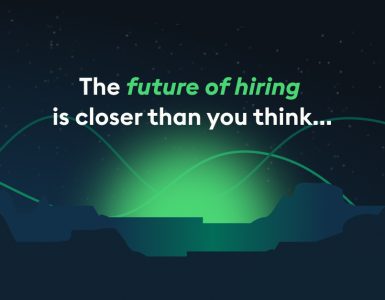Automation means greater productivity and economic growth but it is not clear who is going to pick up the tab for the displaced workers.
In December, General Motors (GM) announced plans to slash 15 percent of its salaried workforce and shut down five of its North American auto plants. Lordstown, Ohio was the first location to close its doors, to the protestations of laid-off workers who held signs reading “allocate us we’ve earned a new product” and “stop offshoring keep jobs here”. However, in this tragic story, it’s not the forces of globalization at work, rather these ousted employees are experiencing the first pangs of America’s digital transformation growing pains.
As GM cuts approximately 6,000 factory jobs and 4,000 white collar roles across the US and Canada, the company has also been hiring…. some 9,000 people in the last 24 months.
“We are going to continue to hire,” says GM CEO, Mary Barra.“Because when we look at the skill sets that we need for the future, the vehicle has become much more software-oriented, when you think about the hundreds of millions of lines of code that are in a vehicle that operates today, that’s only going to increase.”
What is happening at GM now, is emblematic of a greater shift globally, and belies the popular narrative that American manufacturing is disappearing. In fact, the U.S still produces 18.6 percent of all goods in the world (second only to China) and is expected to grow 3.4 percent in 2019… It’s the number and type of jobs that are pulling the vanishing act.
This monumental shift in labor can be described as the 4th industrial revolution and relates to the implementation of smart technologies in factories, offices, and even vehicles, automating manual and administrative tasks, eliminating some jobs and drastically altering others.
The World Economic Forum (WEF) reports that by 2030, 210 million people are expected to change occupations. Furthermore, the Organisation for Economic Co-operation and Development (OECD) reports that 32 percent of all jobs will see significant changes in how they are performed. For example, jobs that focus on trade skills such as auto mechanics, machinists, electricians, and plumbers won’t be replaced by robots, however, the digital know-how required to caarry out the work will significantly increase.
“So far, the debate on these transformations has been sharply polarized,” says Andy Haldane, Bank of England Chief Economist. “Between those who foresee limitless new opportunities and those that foresee a massive dislocation of jobs…In fact, the reality is likely to be highly specific to the industry, region, and occupation in question and the ability of various stakeholders to successfully manage change.”
The U.S. is expected to be hit hard with 1.4 million workers to be displaced from their current jobs in the next decade. However, the OECD asserts 95 percent of at least the 1.4 million displaced workers in the U.S can be re-trained if money is invested in opportunities such as vocational schools, subsidizing graduate schools, providing on-site job training, or massive open online courses.
That’s all well and good, but WEF estimates such measures will run upwards of $34 billion, which begs the question – who’s picking up the tab?
“In our view,” says Saadia Zahidi, Managing Director of the WEF and Head of the Centre for the New Economy and Society. “A combination of three investment options needs to be applied: companies working with each other to lower costs; governments and taxpayers taking on the cost as an important societal investment; and governments and business working together.”
The WEF predicts employers could cover up to 14 percent of the reskilling bill and still maintain a profit, as not reskilling comes with its own set of costs including, redundancy pay, recruiting, and the detriment to staff morale due to layoffs. As for the other 85 percent, a small portion could come from private investment – think
This long-term reskilling investment may be a hard sell, yet the price of doing nothing could be higher. Think of the lost tax revenue and GDP, as well as the wider societal implications of high unemployment rates, if 1.4 million workers are out of the job.
Proposals for government intervention in reskilling take many forms, one suggestion is a Wage Insurance funded by premiums of about $25 per worker, per year. In this program, proposed, but not passed, by the Obama administration in 2016, the government would cover half the wages (for up to two years) of a person who lost their job through no fault of their own and was either unemployed or employed at a lower paying job.
“Robot Taxes” is another funding proposition. The idea is to shift the normal taxes on labor, such as payroll taxes, onto a company’s capital which in this case would be their automated processes. If a company ultimately chose a robot employee over a human one, their taxes would contribute to reskilling programs or social security nets such as Universal Basic Income (UBI).
UBI is not a new idea, Martin Luther King Jr. proposed a similar concept in his 1967 book, ‘Where Do We Go from Here: Chaos or Community?’ Writing, “I am now convinced that the simplest approach will prove to be the most effective—the solution to poverty is to abolish it directly by a now widely discussed measure: the guaranteed income.”
How it works is the whole population (of a given polity) receives a regular amount of money from the government, no strings attached. There have already been pilot projects in Canada, Kenya, and Switzerland, and the results are largely positive; give people free money and they pump it back into the local economy – cars get repaired, parents have a night out, and teens get part-time jobs.
One example of UBI is Alaska’s Permanent Fund Dividend. Over the last four decades, the area’s permanent residents received annual dividends from the state’s oil investment fund – to the tune of $1,000. At first, it was assumed that with this income boost, people would work less, but a 2018 study found that influx of cash actually increased part-time work 17 percent.
With all these options on the table, the only thing left is to act, but therein lies the problem. While the business sector is leaping into action – just yesterday, Microsoft announced partnerships with five colleges and universities to address the skills gap in fields such as AI, data science, computer science, and cybersecurity – government lags behind, especially in the US.
Why? The Harvard Business Review (HBR) identifies three main obstacles: political gridlock, a focus on deficit reduction, and expensive, slow-moving K-12 education overhauls.
“We think that companies can and should take the lead in training workers to fill the middle-skills gap.” Writes HBR, referring to technical skills that require post-secondary training, but not a four-year degree. “Realistically, that can happen on a large enough scale only if business leaders cooperate with one another, unions, and educational institutions, both regionally and nationally. The key words





























